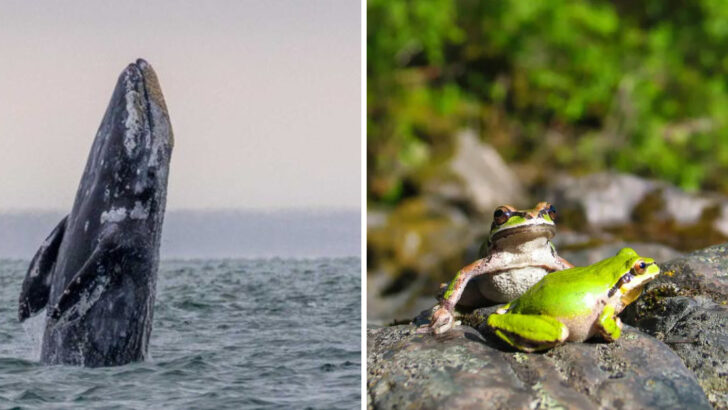California isn’t just sunshine and beaches—it’s a wild playground where nature runs free.
Venture off the beaten path and you might stumble upon a roaming mountain lion, a soaring golden eagle, or even a curious bobcat. Picture yourself in a state where the unexpected is the norm, from mysterious desert dwellers to creatures thriving in lush forests.
Imagine crossing a trail and catching a glimpse of a playful otter by a sparkling stream. The air buzzes with life, and every corner of California holds a secret waiting to be discovered.
Ready for a wild ride? Let’s dive into 25 incredible animals you might actually see in California—each one a living testament to the state’s untamed spirit and boundless natural wonder.
California Sea Lion
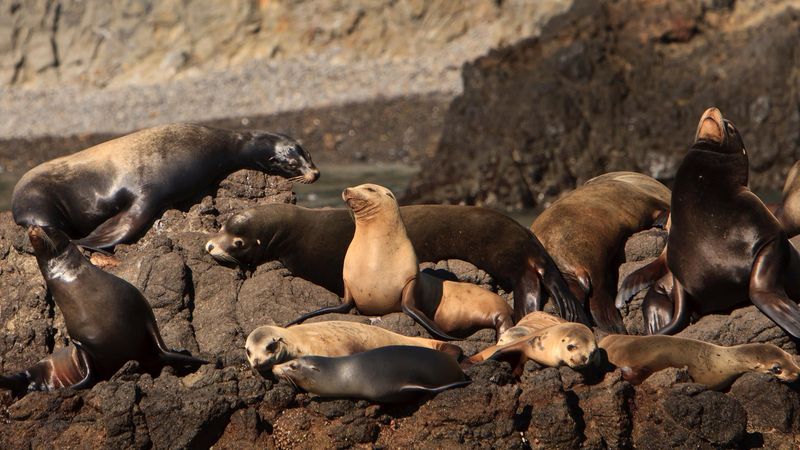
California Sea Lions are a common sight along the state’s coastline. These playful creatures are known for their intelligence and agility in the water. Often seen sunbathing on rocky shores, they can be quite vocal, making barking sounds that echo along the coast.
Sea Lions are social animals, frequently spotted in groups, known as colonies. They feed on fish and squid, showcasing their exceptional diving skills. Whether lounging on docks or performing acrobatics in the waves, these animals are a captivating presence in California’s marine life. Keep an eye out for them on your next beach visit.
American Black Bear
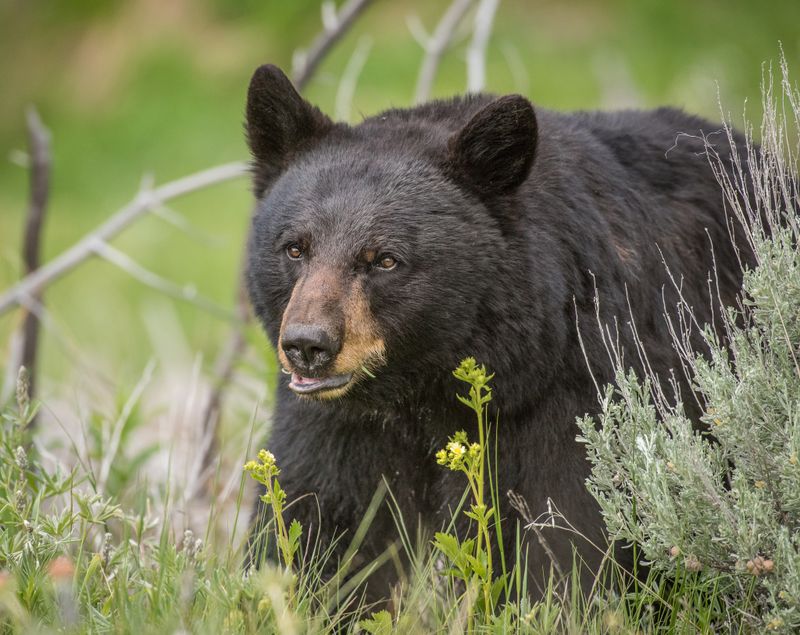
In the forests of California, the American Black Bear roams freely. These large mammals are omnivorous, feasting on berries, nuts, and small animals. Despite their name, they can vary in color from black to brown or even cinnamon.
Black Bears are often spotted in national parks, where they forage for food. They are solitary creatures, except for mothers with cubs. Observing these bears from a safe distance can be a thrilling experience. Remember to store food securely when camping to prevent attracting these curious animals to your campsite.
Bald Eagle
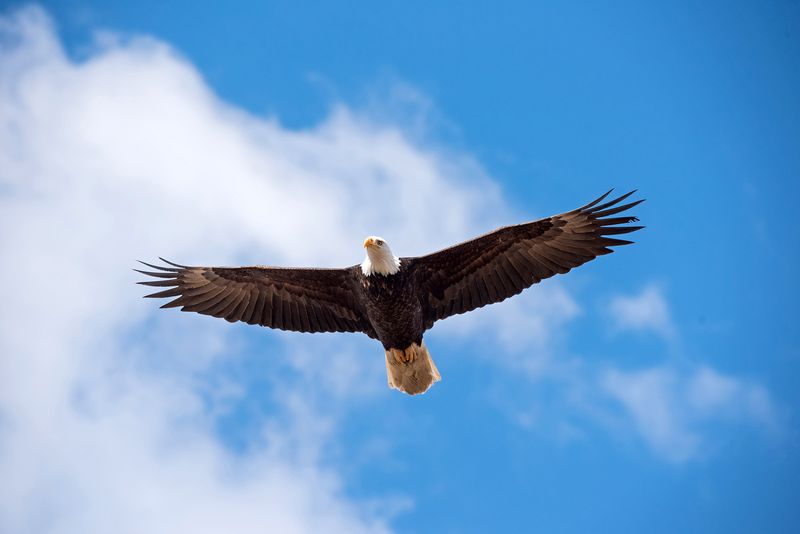
The Bald Eagle, a symbol of the United States, can be found soaring over California’s reservoirs and rivers. Recognizable by their white heads and tails, these birds are powerful hunters, preying on fish and small mammals.
Spotting a Bald Eagle in flight is a breathtaking experience, as they glide gracefully through the sky. Their nests, often built in tall trees, can span up to eight feet across. Witnessing these majestic birds is a testament to California’s thriving natural habitats, making it a must-see for wildlife enthusiasts.
Gray Whale
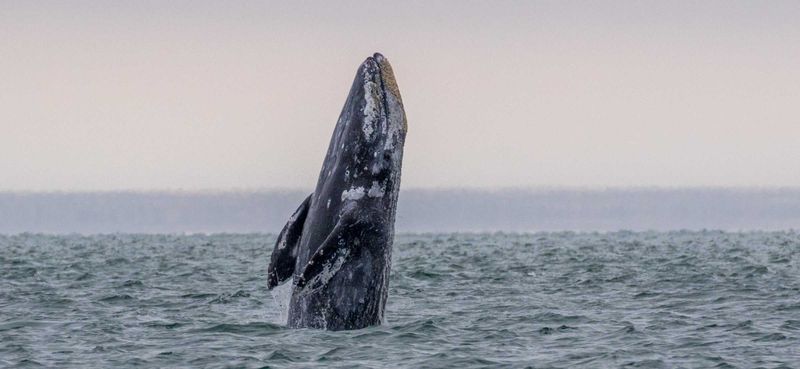
Gray Whales embark on one of the longest migrations of any mammal, traveling from Alaska to Baja California. They are often seen along the Californian coast during their journey, especially during migration season.
These gentle giants are known for their friendly nature, occasionally approaching boats curiously. Whale watching tours offer a chance to observe them up close. Despite their size, Gray Whales feed on tiny crustaceans, filtering them through their baleen plates. Spotting a Gray Whale in the wild is a truly awe-inspiring wildlife encounter.
California Condor
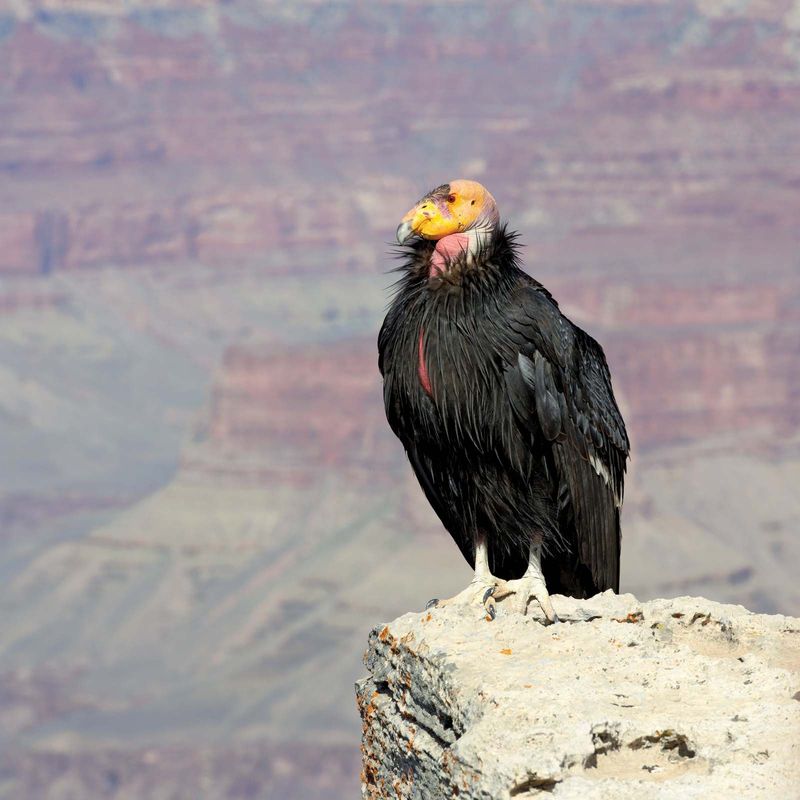
The California Condor, once on the brink of extinction, is now making a remarkable comeback. With a wingspan up to nine feet, these birds are among the largest flying land birds in North America.
Condors are often seen soaring in the skies over the Grand Canyon and parts of Central California. They play a crucial role in the ecosystem as scavengers, helping to clean up carrion. Conservation efforts have been key to their survival, and seeing a Condor in the wild is a testament to successful wildlife preservation initiatives.
Mountain Lion
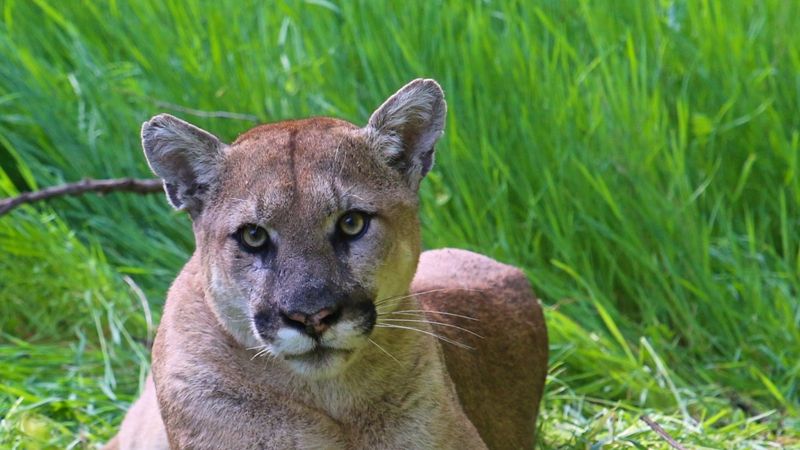
Mountain Lions, also known as cougars or pumas, are elusive predators found in California’s wilderness. These solitary animals are known for their powerful build and agility, capable of leaping great distances.
They primarily hunt deer but will also prey on smaller animals. Mountain Lions are most active during dawn and dusk, often avoiding human contact. While sightings are rare, their presence is vital for controlling prey populations. Hikers should be cautious in known Mountain Lion territories and keep pets on leashes to avoid encounters with these majestic creatures.
Bobcat
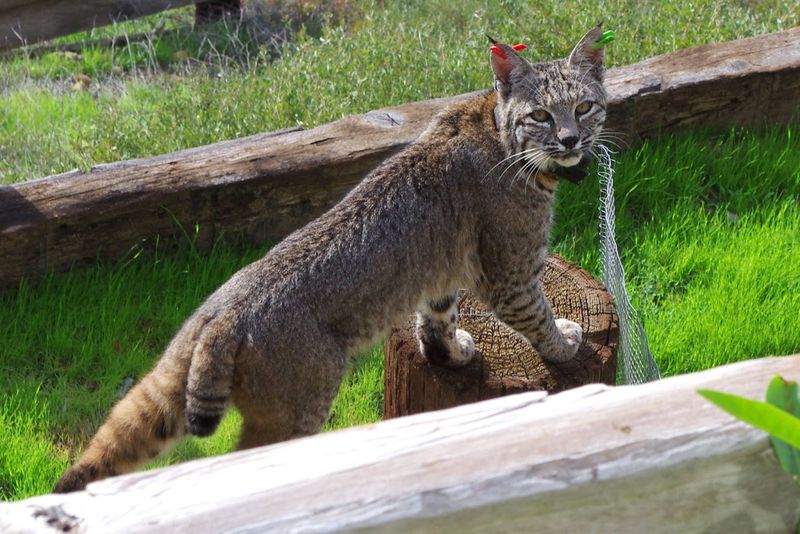
The Bobcat, a medium-sized feline, is a common resident of California’s diverse habitats. Recognizable by their tufted ears and short tails, Bobcats are skilled hunters, preying on rabbits and rodents.
These adaptable animals can be found from the forests to the deserts. Bobcats are elusive, often avoiding humans, but their tracks may be spotted on hiking trails. Observing a Bobcat in the wild is a rare treat, showcasing the rich biodiversity of California. Ensure to respect their space and enjoy the sight from a distance.
Western Rattlesnake
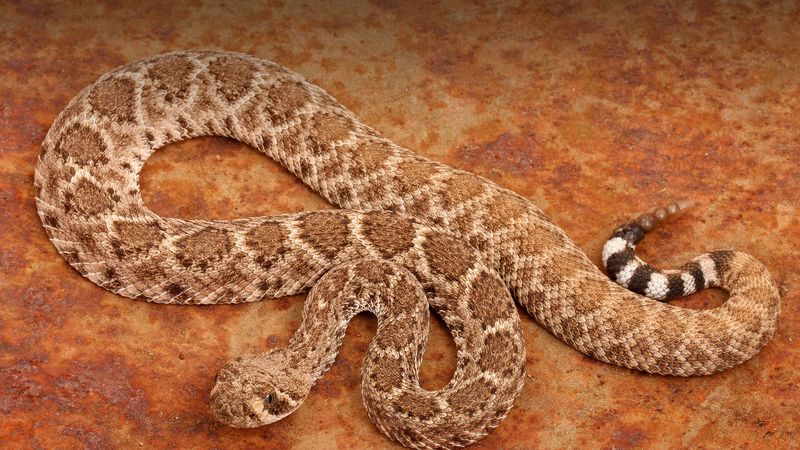
The Western Rattlesnake is a venomous snake commonly found in California’s rocky areas and deserts. Recognizable by the distinct rattle at the end of its tail, this snake uses it as a warning signal to potential threats.
Rattlesnakes are carnivorous, feeding on small mammals and birds. They are most active during warm months, often seen basking in the sun. If you encounter one, give it space and respect its warning. Knowing how to identify and avoid rattlesnake habitats is crucial for safe hiking in California’s wilderness.
Red-Tailed Hawk
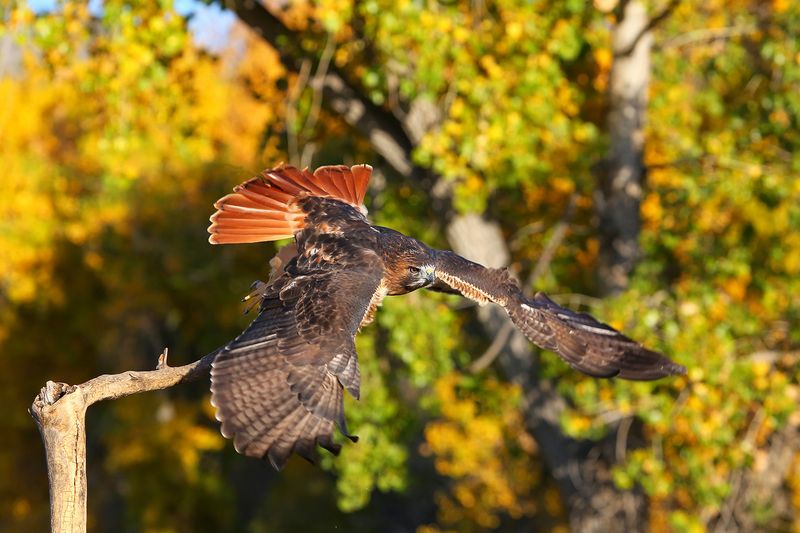
Red-Tailed Hawks are common birds of prey in California, easily identifiable by their reddish-brown tails. These majestic birds are often seen circling high above, searching for rodents and other small animals.
Their keen eyesight allows them to spot prey from great heights. Red-Tailed Hawks build large nests in tall trees or cliffs. Observing their hunting prowess and aerial maneuvers is a captivating experience, highlighting the diverse birdlife in the region. Birdwatchers and nature enthusiasts will find joy in spotting these impressive raptors across the state.
Coyote
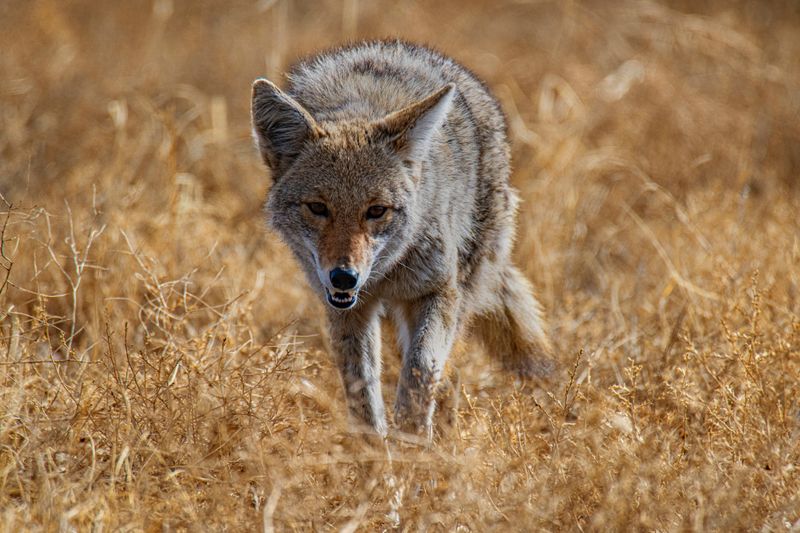
Coyotes are adaptable animals that thrive in various environments, from rural areas to urban landscapes in California. Known for their cunning and resourcefulness, they are often spotted in suburban neighborhoods.
Coyotes are omnivores, feeding on fruits, insects, and small mammals. They play a role in controlling rodent populations. While generally shy, they may approach populated areas in search of food. To coexist peacefully, secure trash bins and avoid feeding them. Observing Coyotes from a distance offers insight into how wildlife adapts to human presence.
Great Horned Owl

The Great Horned Owl is a formidable predator in California’s night skies. Known for their large, tufted ears and striking yellow eyes, these owls are highly skilled hunters.
They feed on a variety of prey, including rodents, birds, and even skunks. Great Horned Owls are often heard before seen, with their distinctive hooting calls echoing through the night. Spotting one perched silently in a tree is an exciting moment for bird enthusiasts. These owls symbolize the mysterious and captivating wildlife found across California.
California Quail

The California Quail, the state’s official bird, is a charming sight in many regions. Known for their distinctive topknot, these small birds are often seen foraging in groups, known as coveys.
Quails are ground-dwelling birds, feeding on seeds and insects. They thrive in a variety of habitats, from woodlands to suburban gardens. Observing their social behavior and intricate calls is a joy for birdwatchers. Protecting their natural habitats ensures these delightful birds continue to flourish across California, adding to the state’s rich avian diversity.
Monarch Butterfly
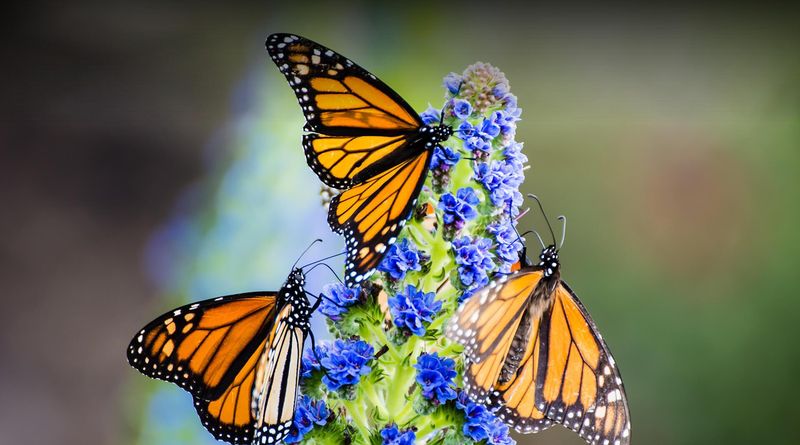
Monarch Butterflies are a stunning sight during their migration through California. Known for their vibrant orange and black wings, these butterflies travel thousands of miles to overwinter in the state’s coastal regions.
They are often seen fluttering around gardens and parks, feeding on nectar from flowers. Monarchs play an essential role in pollination, contributing to the health of ecosystems. Conservation efforts are crucial to protect their habitats and migration routes. Experiencing the Monarch’s migration is a magical moment, celebrating the wonders of nature.
Black-Tailed Deer
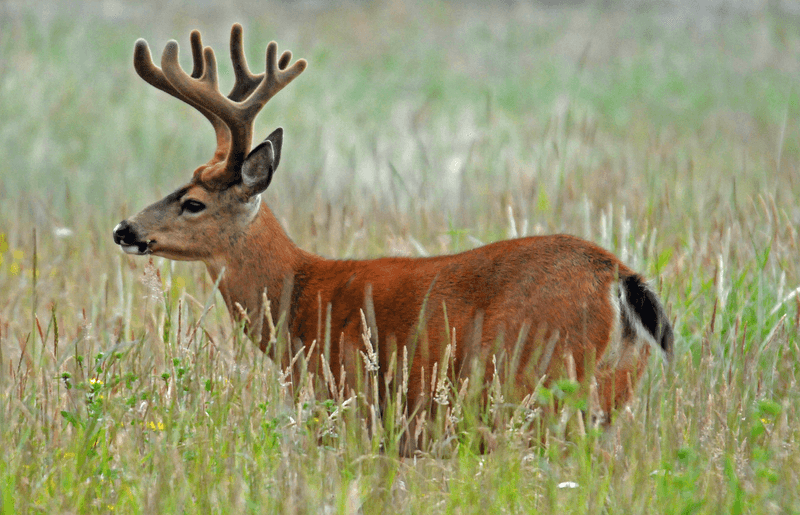
The Black-Tailed Deer is a common sight in California’s forests and meadows. These graceful animals are known for their distinctive black-tipped tails and large, expressive eyes.
Deer are herbivores, feeding on leaves, grasses, and shrubs. They are often spotted during dawn and dusk, when they are most active. Observing a deer in the wild is a peaceful experience, offering a glimpse into the state’s natural beauty. To protect these animals, it’s important to maintain safe driving speeds in known deer crossing areas.
Striped Skunk
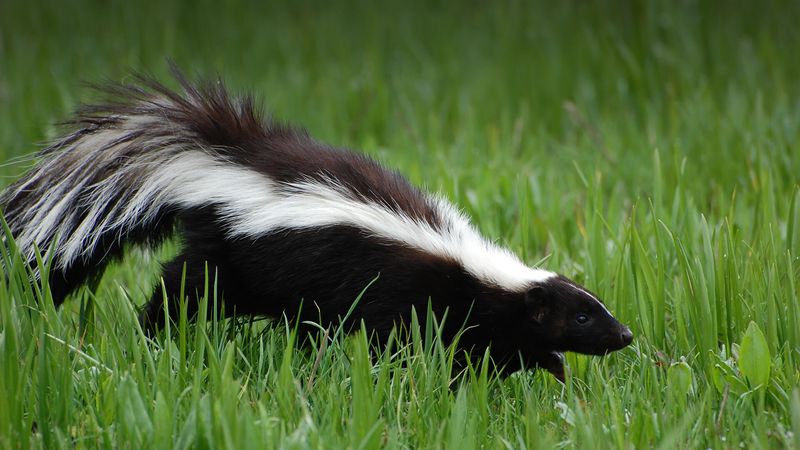
The Striped Skunk is unmistakable with its bold black and white patterns. These nocturnal creatures are often found in California’s woodlands and suburban areas, foraging for insects, fruits, and small rodents.
Skunks are known for their defensive spray, a pungent deterrent against predators. Despite their reputation, they play an essential role in controlling pest populations. Observing a skunk from a distance can be a fascinating and aromatic encounter. Ensuring proper trash management helps reduce skunk visits to residential areas.
Northern Elephant Seal
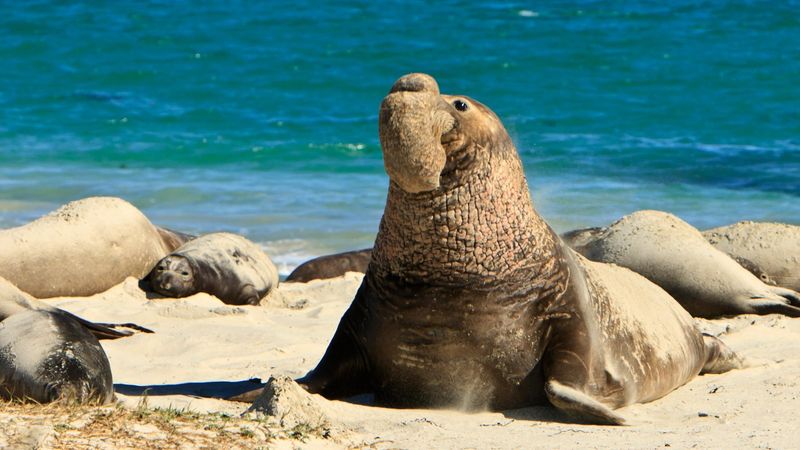
Northern Elephant Seals are impressive marine mammals found along California’s coastline. These large seals are named for their trunk-like noses, especially prominent in males.
Elephant Seals spend much of their time at sea, diving to great depths in search of squid and fish. During breeding season, they gather on beaches in large colonies, offering a unique spectacle for visitors. Respectful observation from a safe distance is crucial, as these animals can be aggressive when threatened. Witnessing their gatherings is a remarkable highlight of coastal wildlife experiences.
Pacific Tree Frog
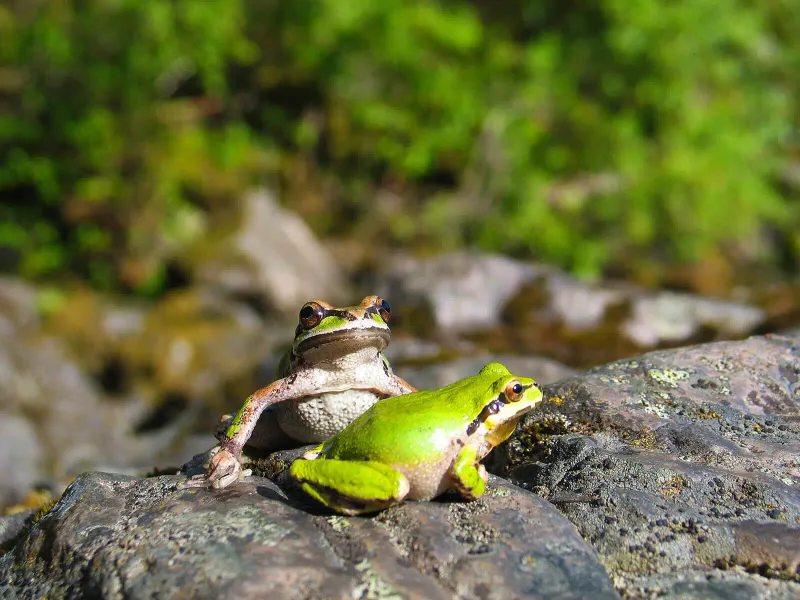
Pacific Tree Frogs, also known as Chorus Frogs, are small yet vibrant amphibians found throughout California. Known for their distinctive calls, they are often heard during rainy seasons.
These frogs are excellent climbers, often seen on leaves and branches. Their color can vary from green to brown, allowing them to blend into their surroundings. Observing these frogs offers insight into the diverse amphibian life in the state. Protecting wetland habitats is vital to support their populations and ensure their melodies continue to resonate.
Western Fence Lizard
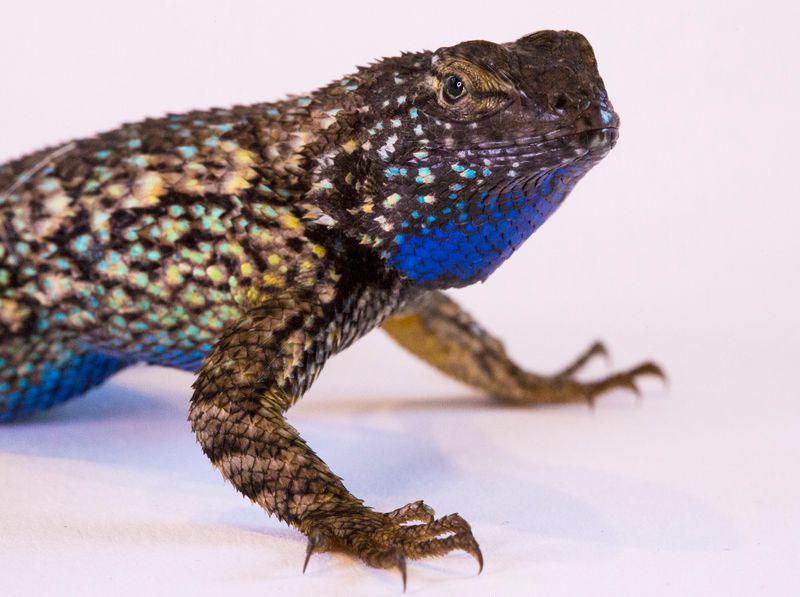
The Western Fence Lizard, affectionately known as the “Blue Belly,” is a common reptile in California. These lizards are often seen basking in the sun on rocks and fences.
Their distinctive blue underbellies are most visible during mating displays. Western Fence Lizards are insectivores, helping to control pest populations. They are known for their quick movements and ability to escape predators. Observing these lizards is a delight for nature enthusiasts, highlighting the state’s rich reptilian diversity. Encouraging native plants in gardens can attract these beneficial creatures.
Osprey
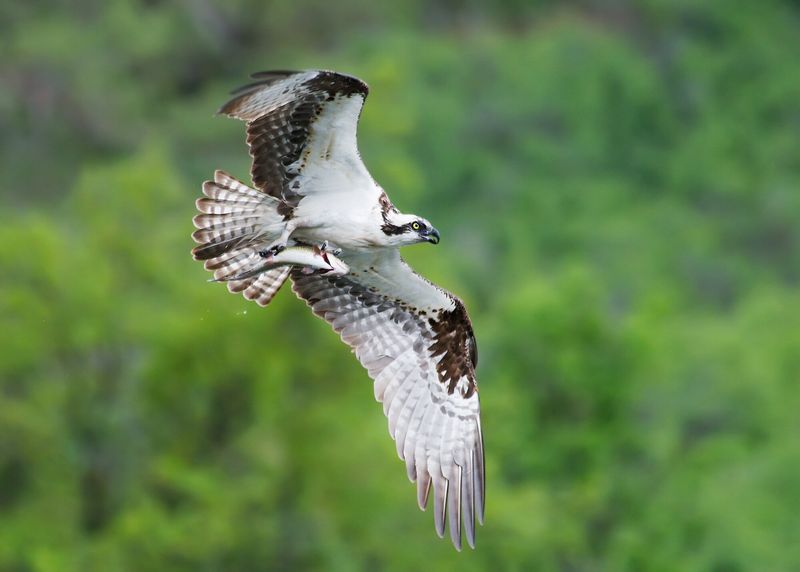
Ospreys, also known as fish hawks, are expert anglers often seen along California’s waterways. These large raptors are renowned for their fishing prowess, diving into the water to catch their prey.
With their striking brown and white plumage, Ospreys are a distinctive sight. They build large nests near water sources, providing a vantage point for spotting fish. Observing an Osprey’s dive is a thrilling experience, showcasing their adaptability and skill. Protecting water quality is crucial to support these birds and the ecosystems they inhabit.
Western Bluebird
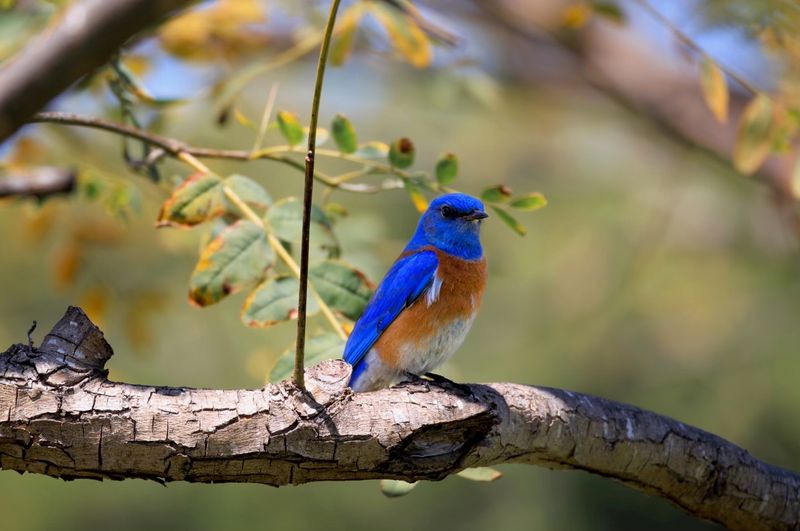
The Western Bluebird is a small, colorful bird that brings a splash of color to California’s landscapes. Known for their bright blue feathers and rusty bellies, they are often seen in open woodlands and farmlands.
Bluebirds feed on insects and fruits, making them beneficial for controlling pests. They nest in cavities, so providing nest boxes can help support their populations. Observing a Western Bluebird is a treat for birdwatchers, offering a glimpse into the state’s vibrant avian life. Encouraging native plants in gardens can attract these charming birds.
Peregrine Falcon
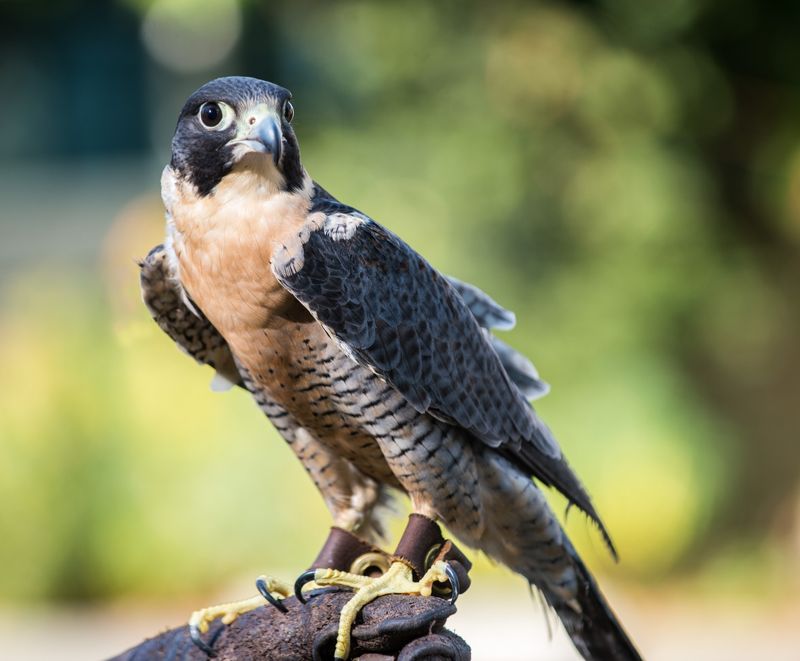
Peregrine Falcons are renowned for their speed, often seen soaring over California’s landscapes. As the fastest birds, they can reach speeds over 200 mph during dives.
These raptors hunt by striking prey mid-air, showcasing their incredible agility. Peregrines are often found nesting on cliffs or tall structures. Observing a Peregrine Falcon in action is a breathtaking experience, highlighting the wonders of avian life. Conservation efforts have helped their populations recover, allowing more people to witness their impressive hunting skills in the wild.
Banana Slug
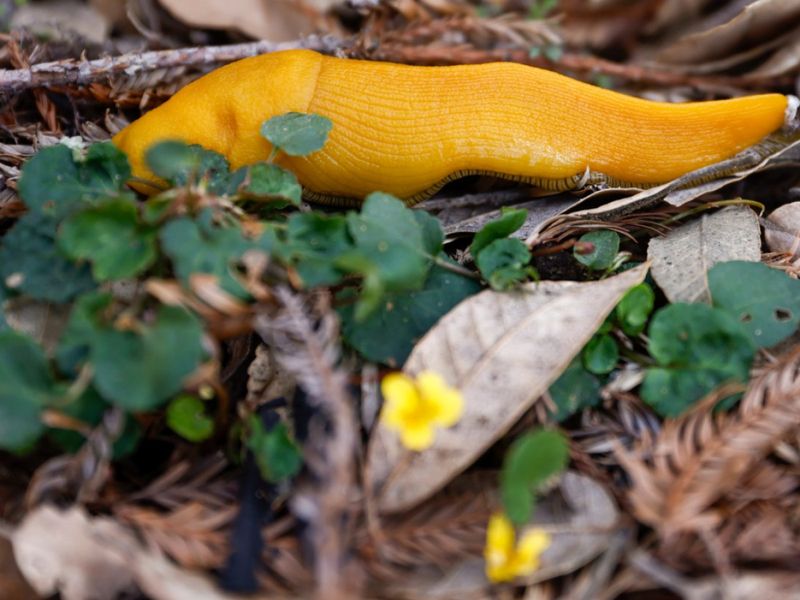
The Banana Slug, a vibrant yellow mollusk, is a unique sight in California’s damp forests, especially in redwood groves. These slugs play a crucial role in the ecosystem by decomposing organic matter.
Known for their slow movement, they are often spotted crawling across forest floors. Their bright color makes them unmistakable, adding a splash of color to the lush greenery. Observing Banana Slugs offers insight into the state’s rich biodiversity. Protecting forest habitats is essential to preserve these fascinating creatures and their environment.
Anna’s Hummingbird
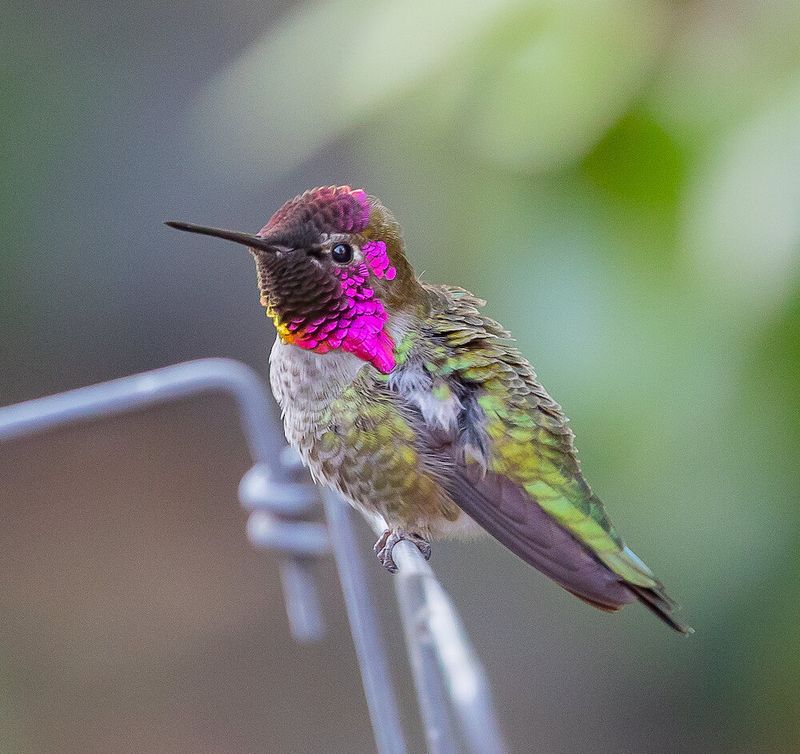
Anna’s Hummingbirds are a delightful presence in California gardens year-round. Known for their iridescent feathers and rapid wing beats, they are often seen hovering near flowers.
These tiny birds feed on nectar, playing a role in pollination. Their agility and speed make them a fascinating subject for observation. Providing native flowering plants in gardens can attract these charming birds. Observing Anna’s Hummingbirds offers a glimpse into the intricate connections within ecosystems, showcasing the beauty and complexity of California’s wildlife.
Ringtail Cat
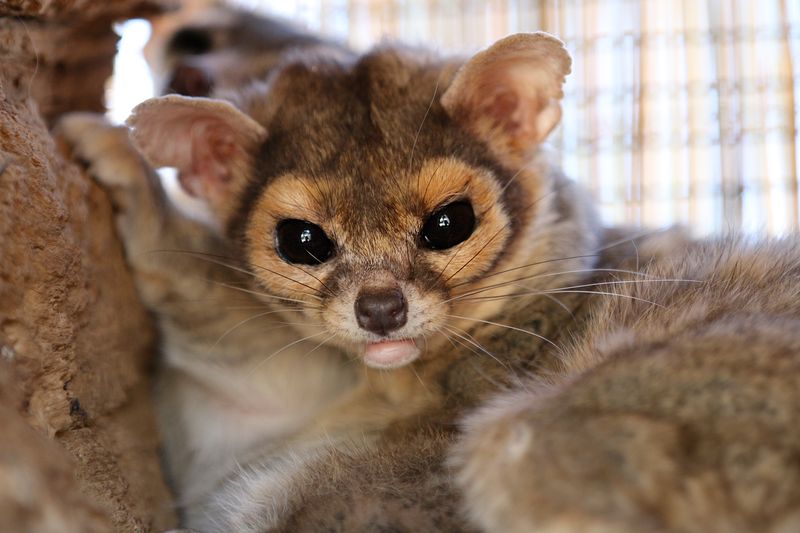
The ringtail cat, despite its name, isn’t a feline at all. Resembling a small fox, this nocturnal mammal is a member of the raccoon family. They are primarily found in arid regions of California and are known for their agility and keen climbing abilities.
Ringtails are solitary creatures and are often seen hopping between rocks in search of food. Their diet consists mostly of small mammals and insects.
If you’re hiking in California’s desert landscapes at night, you might just spot one of these elusive creatures with their striking ringed tails glowing in the moonlight.
Tarantula Hawk Wasp
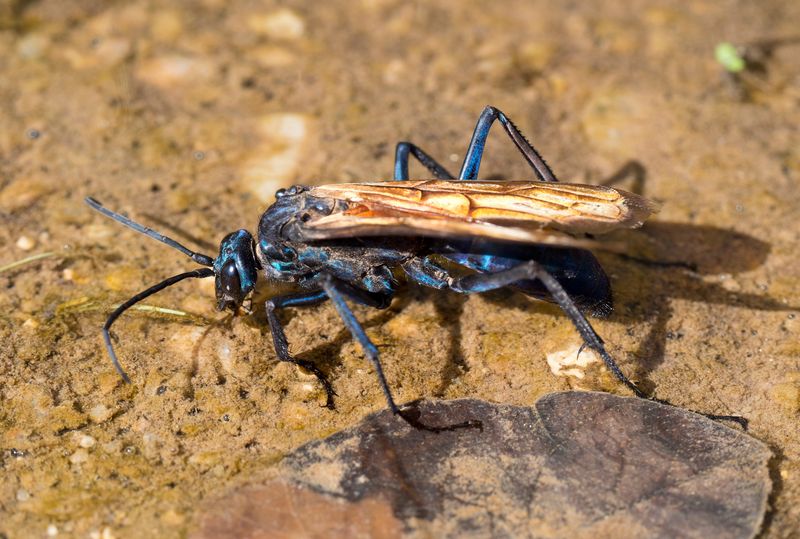
The tarantula hawk wasp is as intimidating as it sounds, yet it’s a fascinating sight in California’s meadows and deserts. With metallic blue-black bodies and vibrant orange wings, they are strikingly beautiful.
These wasps are known for their peculiar breeding habits where the female hunts tarantulas to serve as hosts for her larvae. Despite their fierce appearance, they are mostly docile unless provoked.
While their sting is notoriously painful, it rarely poses serious threats to humans. Observing these wasps from a distance reveals a unique aspect of California’s diverse ecosystem.

